| Year: | 2021 |
| Tools: | InDesign, Illustrator, Photoshop, Acrobat |
| Fields: | Graphic Design, Online Education Design, Research Visualisation, Book Editing & Publishing |
Download the free interactive e-book (PDF) via TU Delft Open Publishing.
For the Faculty of Technology, Policy and Management at Delft University of Technology I created an interactive e-book and printed book, to bundle two Massive Open Online Courses (MOOCs), that have been offered on the edX platform since 2017, with the intention of making the material available for a wider audience, especially in developing countries.
The main reason for making this book was to allow the course material to be used by universities, enterprises and other relevant people in developing countries, because these are the places where the knowledge can be put best into practice.
The 400+ page book contains video lectures, theoretical knowledge, assignments and case studies about Building with Nature around the world. The scope of my assignment was the design of a hardcopy and of an e-book. I co-edited the texts of the video lectures and other reading material in the book together with main author and editor Jill Slinger. A batch of hard copies has been sent to partners and local universities around the world.
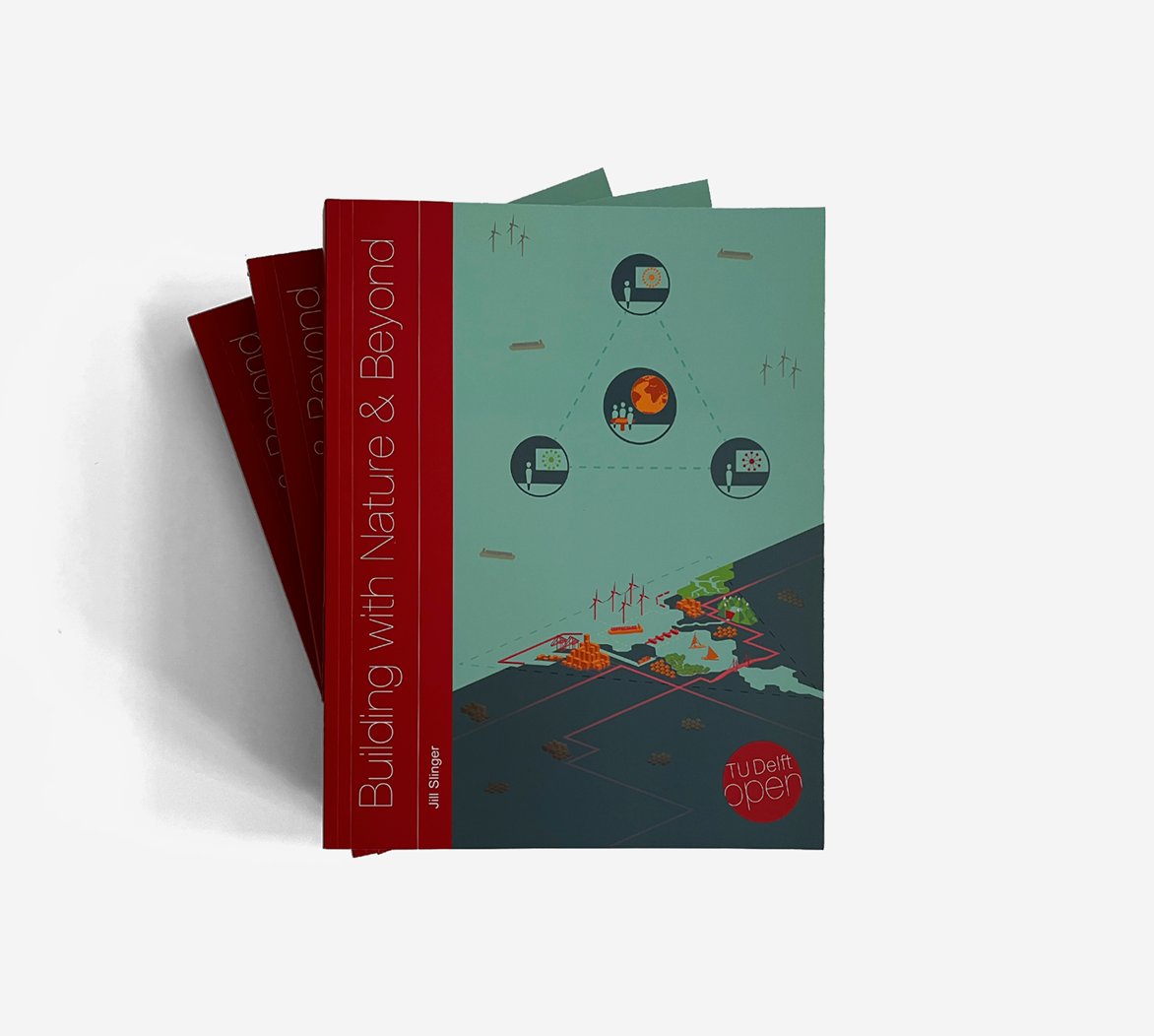
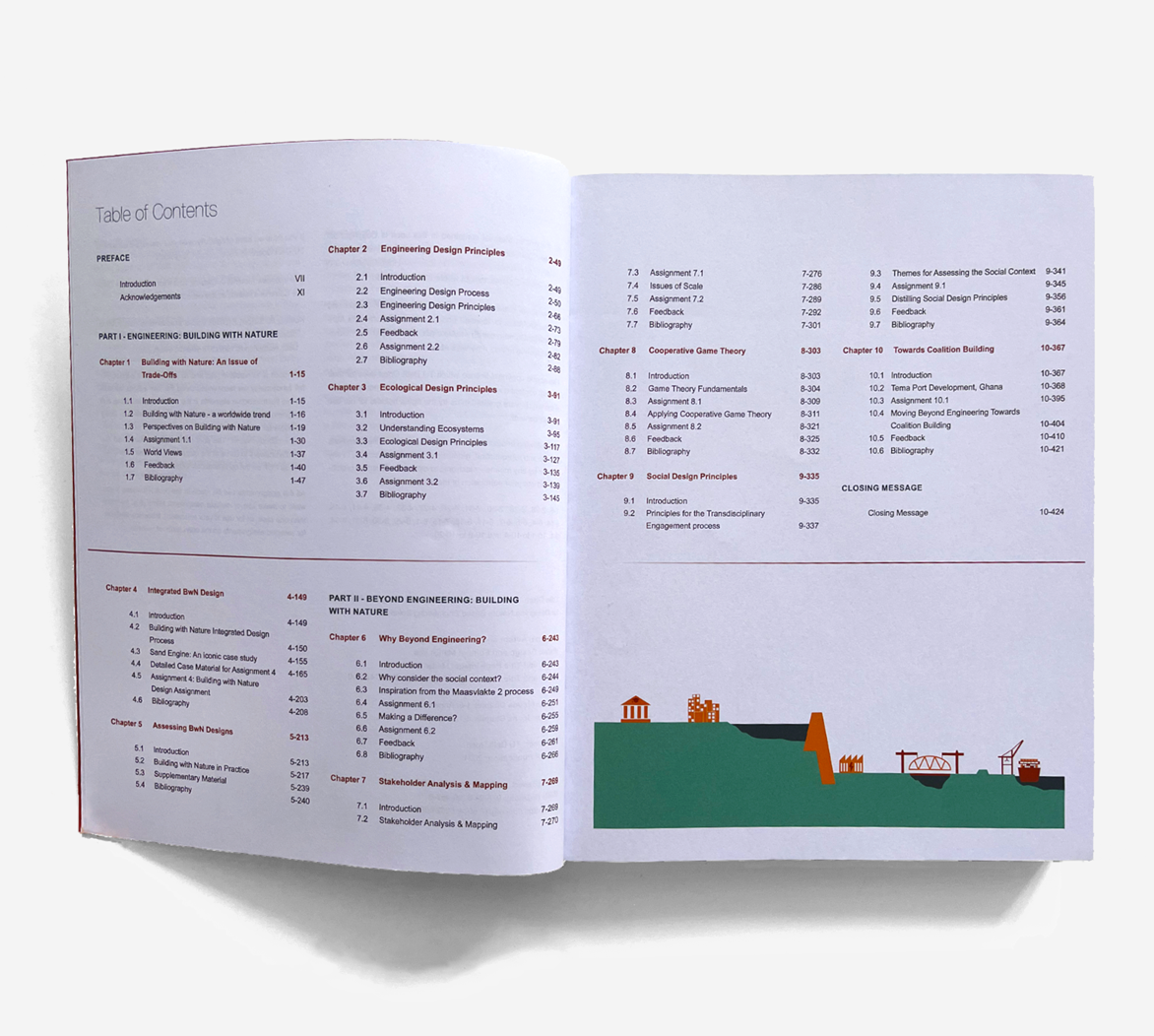
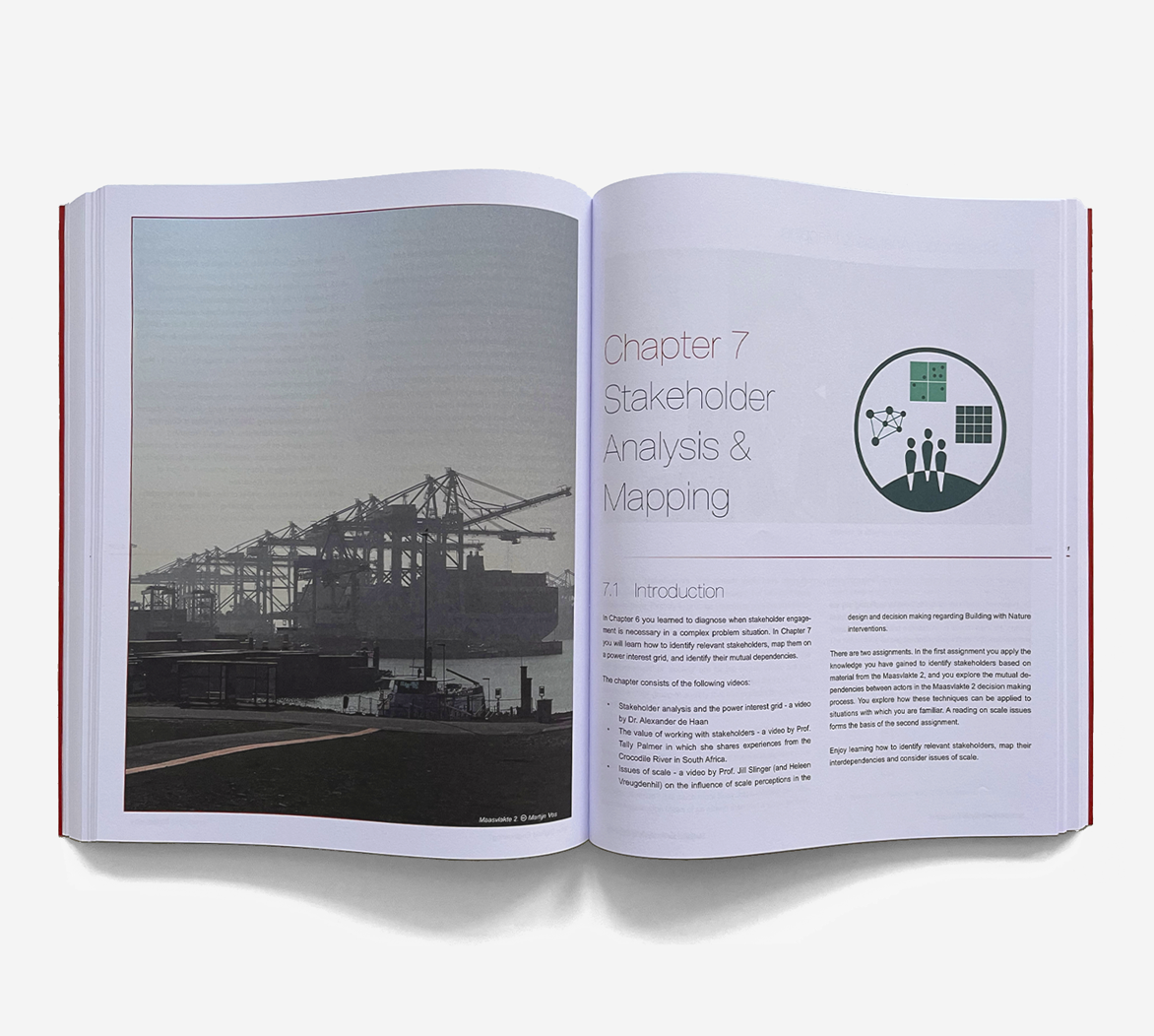
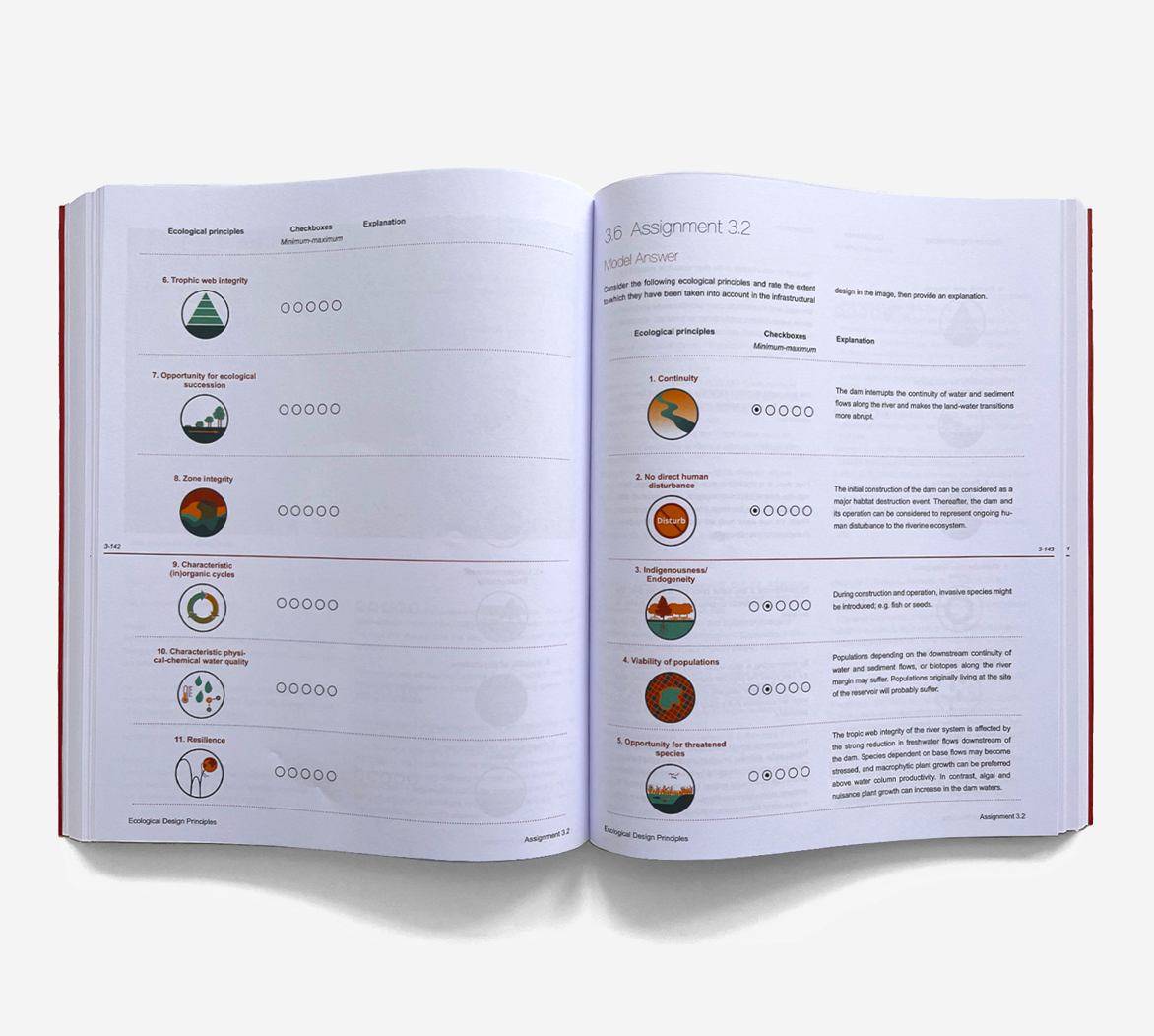
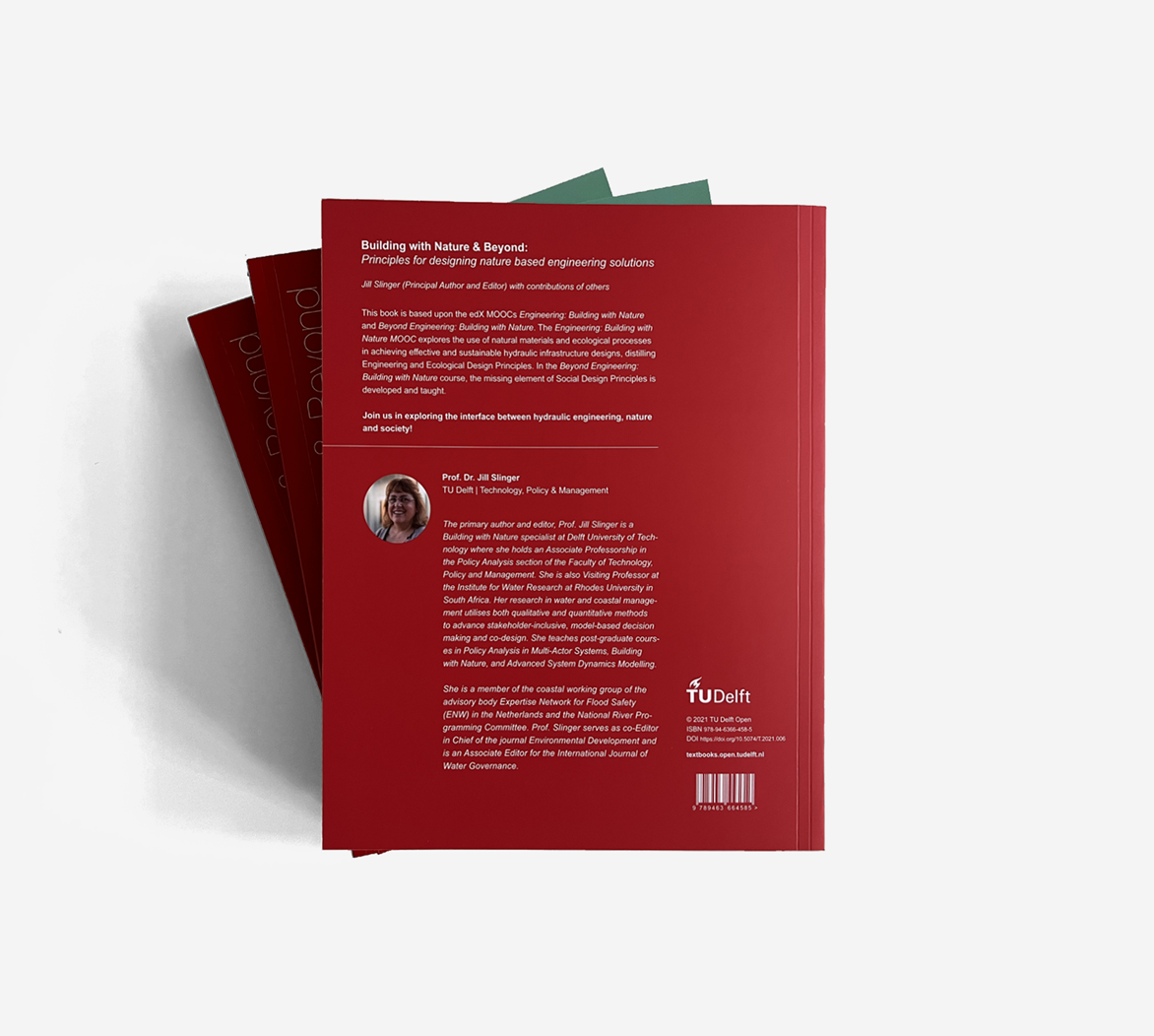
Process
The main design problem was how to translate an interactive online course with quizzes and videos into a static digital document. We knew that the main distribution of the book would be in the form of an e-book. Since the main target audience might not always possess reliable internet connections, one of the conditions for the e-book was that all the core material could be studied without a live internet connection. With this in mind, I explored ways to exploit the digital format fully. I designed the e-book in such a way that it would mirror a printed course textbook that allows for writing and notes.
To achieve this, I investigated the potential of the interactive PDF format. This resulted in the ability to complete the assignments as forms, like using a pen to write in the book. Quiz questions are provided with immediate feedback by using the feedback buttons on the page, that show and hide the answer. The video below shows this in action.
So, the measures above allowed for completing the assignments digitally or in an analogue way. Last major problem was tackling the video lectures. All videos can be watched by clicking or scanning the QR code, but we decided that the book should also have printed transcripts and presentations, to allow for accessibility for people without internet. I curated the presentation material because of limited space and gave these pages with transcripts and presentations a very distinctive layout, so people recognize that they can skip these pages if they are able to watch the video.